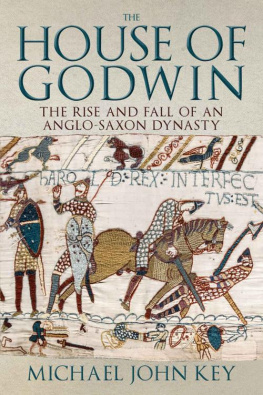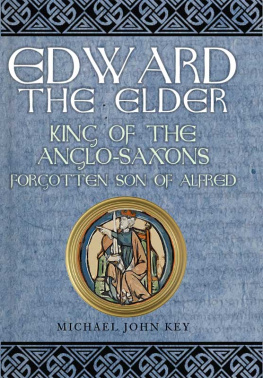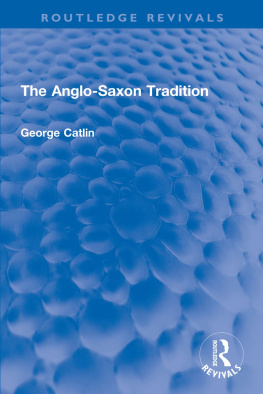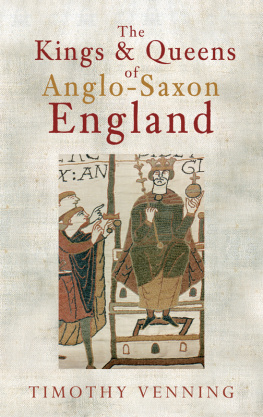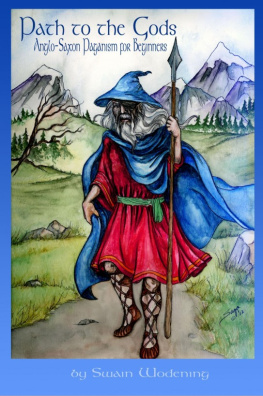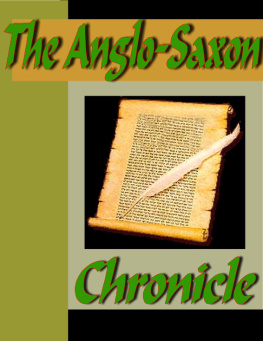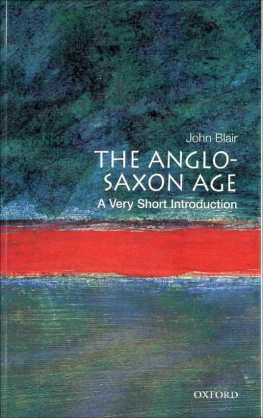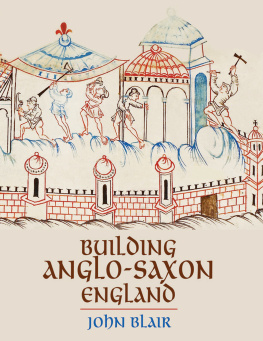Michael John Key - The House of Godwin: The Rise and Fall of an Anglo-Saxon Dynasty
Here you can read online Michael John Key - The House of Godwin: The Rise and Fall of an Anglo-Saxon Dynasty full text of the book (entire story) in english for free. Download pdf and epub, get meaning, cover and reviews about this ebook. year: 2022, publisher: Amberley Publishing, genre: Non-fiction. Description of the work, (preface) as well as reviews are available. Best literature library LitArk.com created for fans of good reading and offers a wide selection of genres:
Romance novel
Science fiction
Adventure
Detective
Science
History
Home and family
Prose
Art
Politics
Computer
Non-fiction
Religion
Business
Children
Humor
Choose a favorite category and find really read worthwhile books. Enjoy immersion in the world of imagination, feel the emotions of the characters or learn something new for yourself, make an fascinating discovery.
- Book:The House of Godwin: The Rise and Fall of an Anglo-Saxon Dynasty
- Author:
- Publisher:Amberley Publishing
- Genre:
- Year:2022
- Rating:5 / 5
- Favourites:Add to favourites
- Your mark:
- 100
- 1
- 2
- 3
- 4
- 5
The House of Godwin: The Rise and Fall of an Anglo-Saxon Dynasty: summary, description and annotation
We offer to read an annotation, description, summary or preface (depends on what the author of the book "The House of Godwin: The Rise and Fall of an Anglo-Saxon Dynasty" wrote himself). If you haven't found the necessary information about the book — write in the comments, we will try to find it.
The House of Godwin: The Rise and Fall of an Anglo-Saxon Dynasty — read online for free the complete book (whole text) full work
Below is the text of the book, divided by pages. System saving the place of the last page read, allows you to conveniently read the book "The House of Godwin: The Rise and Fall of an Anglo-Saxon Dynasty" online for free, without having to search again every time where you left off. Put a bookmark, and you can go to the page where you finished reading at any time.
Font size:
Interval:
Bookmark:


For Tamasine Roberta Michele
First published 2022
Amberley Publishing
The Hill, Stroud
Gloucestershire, GL5 4EP
www.amberley-books.com
Copyright Michael John Key, 2022
The right of Michael John Key to be identified as the Author of this work has been asserted in accordance with the Copyright, Designs and Patents Act 1988.
All rights reserved. No part of this book may be reprinted or reproduced or utilised in any form or by any electronic, mechanical or other means, now known or hereafter invented, including photocopying and recording, or in any information storage or retrieval system, without the permission in writing from the Publishers.
British Library Cataloguing in Publication Data.
A catalogue record for this book is available from the British Library.
ISBN 9781445694061 (HARDBACK)
ISBN 9781445694078 (eBOOK)
1 2 3 4 5 6 7 8 9 10
Typeset in 10pt on 13.5pt Sabon.
Typesetting by SJmagic DESIGN SERVICES, India.
Printed in the UK.
Contents
Acknowledgements
In writing this book I am particularly indebted to those academics and scholars that have previously devoted their time and energy towards translating and editing the various important primary source documents that address this period of history, from Latin, Old English, or Norman French into modern English. I have relied heavily on many of these texts during my research and could not have completed it without their earlier endeavours.
I would also like to acknowledge the large library of secondary sources and the works and texts of many historians that gave me inspiration for the themes and direction of this book. They are too numerous to mention all of them here but are listed appropriately within the bibliography. However, I would wish to single out my gratitude to Frank Barlow, Stephen Baxter, Simon Keynes, Pauline Stafford, and Ann Williams, for their valuable research and enthusiasm in particular for all matters related to eleventh-century English history. A specific acknowledgement should also be directed towards the compilers and keepers of the Prosopography of Anglo-Saxon England database. With specific regard to a history on the Godwin dynasty and Godwin in particular, I am also grateful to the earlier research of Hubert Grills and Emma Mason.
Further thanks go to English Heritage at Battle Abbey, to the authorities at Waltham Abbey and Holy Trinity Church at Bosham, and to those unnamed individuals that have helped me with information and advice during my visits to some of the places named within the text. Thanks go to Shaun Barrington, Connor Stait and Nikki Embery at Amberley Publishing and in particular to Alex Bennett at Amberley for supporting the completion of this book through uncertain times in 2020 and 2021. Lastly, I would like to give a special mention to my partner, Alice, for her continued patience and support.
List of Maps and Tables
1. Map of Anglo-Saxon England in the early eleventh century2. House of Godwin family tree3. Cnuts charter list, 1018 to 10354. Map of earldom distributions, 1033 and 10435. Edward the Confessors charter list, 1043 to 10536. Map of earldom distributions, 1049 and 10547. Edward the Confessors charter list, 1054 to 10658. Map of earldom distributions, 1059 and 10659. Estates owned by Godwinsons (as of 1066) per Domesday10. Anglo-Saxon, Danish and Norman lines of successionIntroduction
This work tells the story of the House of Godwin, the life and times of Earl Godwin of Wessex and his family in eleventh-century England. The rise and fall of the Godwin dynasty is encapsulated within the major historic events that touched Anglo-Saxon English history in this period, and their story runs parallel with all the dramatic developments described in these chapters. I have attempted, as much as the primary sources have allowed, to relate the full drama of the Godwinson family dynasty within the pages that follow and hopefully given Godwin and his wife Gytha the necessary consideration they are due.
This was a period which saw England conquered twice by foreign invaders a half century apart, first the Danes and then the Normans. The Godwinson family were central to all the major developments that took place in England from shortly after the succession of Cnut until the appearance of William the Conqueror. The careers of Godwin and his eldest children are therefore inexorably linked to the volatile politics that characterised this period, and the major changes that took place both inside England and on a wider scale across western Europe and Scandinavia. As powerful as the Godwinsons were to become, they would prove unmindful as to the fateful role their dynasty was to play towards the last days of Anglo-Saxon hegemony.
After Godwins death in 1053 much of the later chapters fittingly deals with ongoing events surrounding his offspring, particularly his son Harold and the developments relating to the Norman Conquest of 1066. That event looms large in what would be the closing years of Anglo-Saxon rule across England and remains one of the most defining moments in English history.
Godwin of Wessex was to fully emerge in the second decade of the eleventh century during the Anglo-Saxon and Danish wars between Edmund Ironside and Cnut. Within a short span he became by the early 1020s the most influential member of the nobility and chief adviser to Cnut, the new king of England, a position he was to hold under four monarchs for over thirty years, the last being Edward (later to be known as the Confessor). Godwins eldest daughter, Edith (aka Eadgyth), was to become queen after marrying Edward in 1045, and his son Harold was to reach the apex of power when he succeeded Edward as king of England several months before the Norman invasion in 1066. The Godwinsons were the most successful Anglo-Saxon dynasty of their time, surpassing their contemporaries in their perseverance, wealth, and longevity. After holding these positions of influence and significance for almost half a century their dramatic and irreversible fall from power would take only a matter of weeks, heralding the last days of Anglo-Saxon dominance across England.
For those readers acquainted with mid-eleventh-century English history, the dynastic name will be familiar through King Harold II Godwinson (i.e. son of Godwin). I have employed the inclusive Godwinsons rather than using the more etymologically accurate Godwins when referring to Godwin himself and generically to all other members of the Godwin dynasty, and I would kindly ask readers to bear with this principle. This rule also includes Godwins daughters, although their correct patronym should be Godwinsdottir. Using a patronym, adding son to the fathers name, or dottir in the case of a daughter, was a practice particularly common in Scandinavia. Through Anglo-Saxon links to Scandinavia and the Germanic origin of the Anglo-Saxon tribes, the use of patronyms had become common practice in England by the eleventh century.
Having established himself as Cnuts right-hand man by the mid-1020s, Godwin was to safely steer his path through the storm of the Danish succession question between 1035 and 1042, and after Edwards succession he had arguably become as politically influential as the king. It is a sign of Godwins character that he could manoeuvre through several diplomatically difficult situations, not only between 1035 and 1042 but more impressively in his reestablishment following his and his familys exile in 1051. His daughter Ediths marriage to Edward (the Confessor) in 1045 was a masterstroke in the game of political influence, and between the 1040s and the Norman Conquest Godwin and his offspring were to dominate royal policy. The exploits and achievements of the sons Swegn, Harold and Tostig contrast each other dramatically, and the rift that developed between Harold and Tostig resulted ultimately in the direst of consequences for England.
Next pageFont size:
Interval:
Bookmark:
Similar books «The House of Godwin: The Rise and Fall of an Anglo-Saxon Dynasty»
Look at similar books to The House of Godwin: The Rise and Fall of an Anglo-Saxon Dynasty. We have selected literature similar in name and meaning in the hope of providing readers with more options to find new, interesting, not yet read works.
Discussion, reviews of the book The House of Godwin: The Rise and Fall of an Anglo-Saxon Dynasty and just readers' own opinions. Leave your comments, write what you think about the work, its meaning or the main characters. Specify what exactly you liked and what you didn't like, and why you think so.

